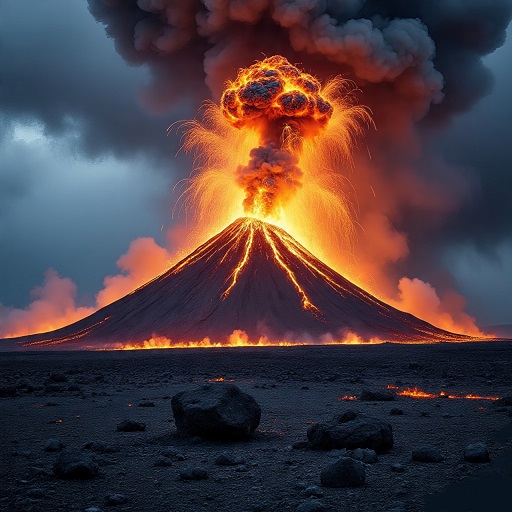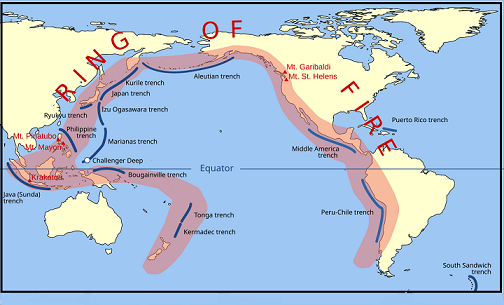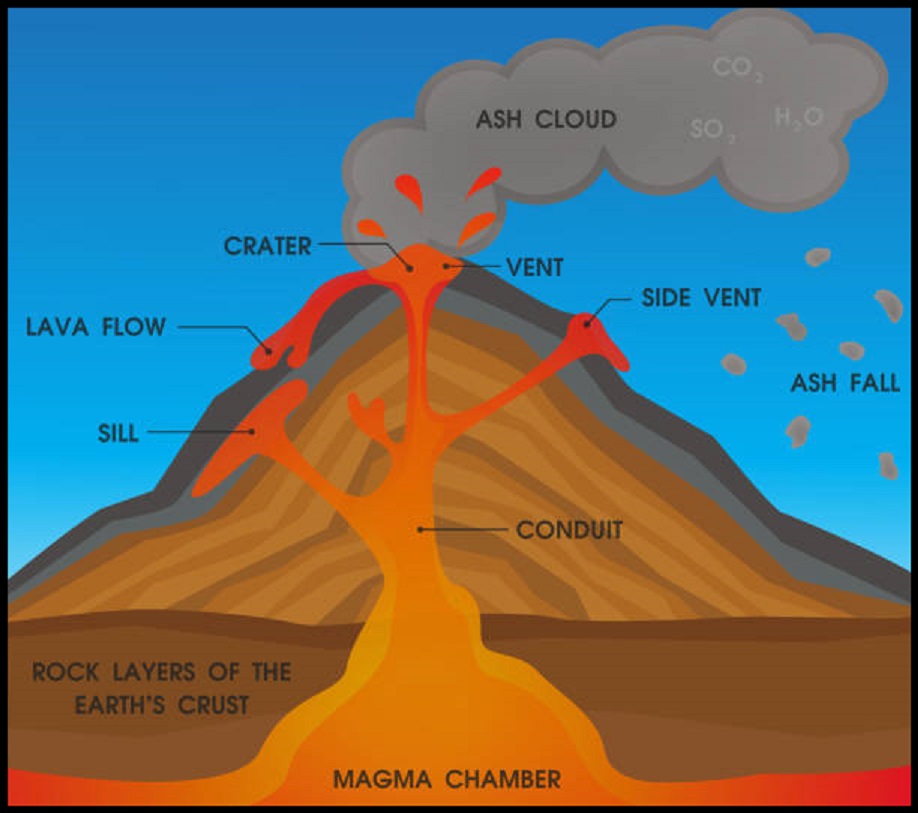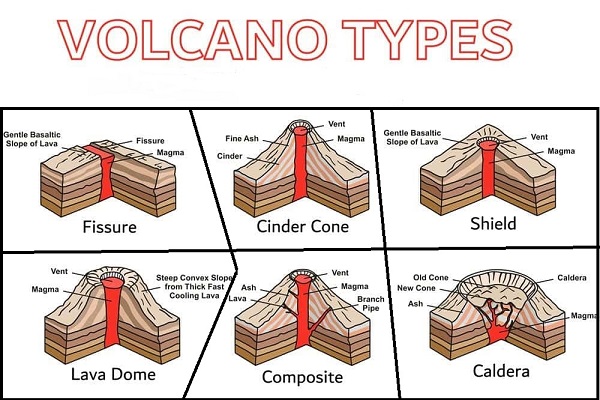Ever felt the ground beneath your feet and thought of it as solid, unchanging, and… well, boring? Think again. Just beneath that thin shell we call home, our planet is a churning, hyperactive factory of fire and rock. Its most spectacular products? Volcanoes.
But volcanoes aren’t just generic “fire mountains.” There are different types of volcanoes and how they form, each with its own shape, eruption style, and story written in lava and ash. Learning about the types of volcanoes and how they form reveals their personalities—from gentle lava oozers to explosive giants.

Table of Contents
How Volcanoes Form
Before diving into the types of volcanoes, let’s look at how they form. All volcanoes begin deep underground, where magma rises from the mantle and escapes through cracks in the Earth’s crust. This process occurs mainly in three geological settings:
1. Convergent Boundaries (Collision Zones)
When two tectonic plates collide, one sinks beneath the other in a process called subduction. As it melts, magma rises to the surface, forming explosive stratovolcanoes along subduction zones. This is why the Pacific Ring of Fire is lined with volcanoes.

2. Divergent Boundaries (Breakup Zones)
When plates drift apart, magma wells up to fill the gap, forming new crust. This is how the Mid-Atlantic Ridge builds the seafloor—Earth’s hidden volcanic factory.
3. Hotspots (The Mavericks)
Some volcanoes form far from plate boundaries, above deep mantle plumes called hotspots. As a tectonic plate moves over the hotspot, it creates a chain of volcanoes. The Hawaiian Islands are a prime example.

Types of Volcanoes and Their Characteristics

1. Shield Volcanoes — The Gentle Giants
- Shape: Broad, gently sloping.
- Lava: Thin, runny basaltic lava.
- Eruptions: Effusive and non-explosive.
- Examples: Mauna Loa, Kilauea (Hawaii).
👉 Largest volcanoes on Earth, often forming new land.
2. Stratovolcanoes (Composite Volcanoes) — The Perfectly Volatile
- Shape: Tall, steep-sided cones.
- Lava: Thick, viscous, gas-rich magma.
- Eruptions: Explosive, producing ash, pyroclastic flows, and lava.
- Examples: Mount Fuji (Japan), Mount St. Helens (USA).
👉 Classic “cone-shaped” volcanoes—deadly yet iconic.
3. Cinder Cone Volcanoes — The One-Hit Wonders
- Shape: Small, steep, conical hills.
- Formation: Built from cooled lava fragments (cinders).
- Eruptions: Short-lived but powerful.
- Examples: Parícutin (Mexico), Sunset Crater (USA).
👉 Can grow rapidly—Parícutin erupted in a cornfield in 1943!
4. Lava Domes — The Pressure Cookers
- Shape: Rounded, dome-like structures.
- Lava: Extremely thick and slow-moving.
- Eruptions: Pressure builds, leading to explosive collapse.
- Examples: Mount St. Helens Dome, Novarupta (Alaska).
👉 Act as dangerous “plugs” for explosive eruptions.
5. Submarine Volcanoes — The Unseen Majority
- Location: Hidden beneath oceans.
- Formation: Create pillow lava on the seafloor.
- Eruptions: Usually unnoticed, sometimes form islands.
- Examples: Loihi Seamount (Hawaii), Surtsey (Iceland).
👉 Account for nearly 75% of volcanic activity.
6. Supervolcanoes — The Apocalyptic Game-Changers (additional)
- Shape: Calderas instead of cones.
- Power: Eruptions thousands of times stronger than normal volcanoes.
- Impact: Can trigger volcanic winters and global climate shifts.
- Examples: Yellowstone (USA), Toba (Indonesia).
👉 Rare, but capable of reshaping life on Earth.
Why Volcanoes Matter
Volcanoes are not just destructive—they’re also creators. They enrich soil, build new land, release gases that shaped our atmosphere, and provide geothermal energy. Nearly 500 million people live near volcanoes, drawn by fertile land and natural resources.
FAQs About Volcanoes
Q1. What are the 4 main types of volcanoes?
Shield, Stratovolcano (Composite), Cinder Cone, and Lava Dome.
Q2. What is the most dangerous type of volcano?
Stratovolcanoes are the most hazardous due to their explosive eruptions.
Q3. What is the largest volcano in the world?
Mauna Loa in Hawaii is the largest volcano by volume.
Q4. What causes a supervolcano eruption?
Massive pressure buildup in a huge magma chamber that eventually collapses.
Q5. Where most volcanoes are found?
In the Pacific Ring of Fire region, in pacific ocean
Conclusion
Volcanoes are Earth’s inner fury brought to the surface—beautiful, terrifying, and essential for life. From the gentle shield volcanoes in Hawaii to the apocalyptic supervolcanoes like Yellowstone, exploring the types of volcanoes and how they form helps us understand their power and uniqueness.
By studying the types of volcanoes and how they form, we not only admire their raw force but also gain insight into how these incredible natural phenomena shape the planet we call home
Enjoyed this topic?
If you’re curious to learn more about science, don’t miss our other exciting blogs:
- World War 2 Timeline
- What is Electricity?
- What Causes Earthquakes?
- Why is the Sky Blue?
- How Do Plants Grow?
…and many more fascinating science topics!
